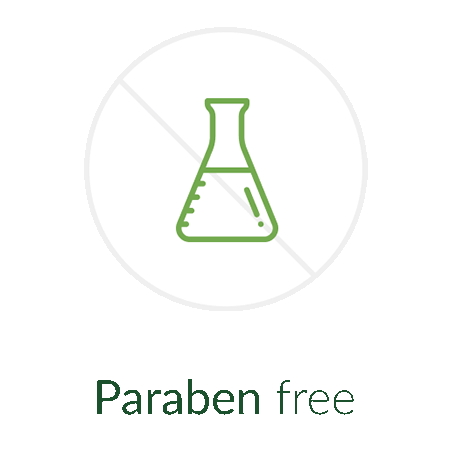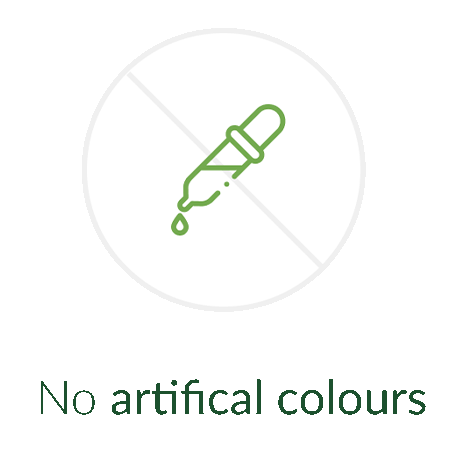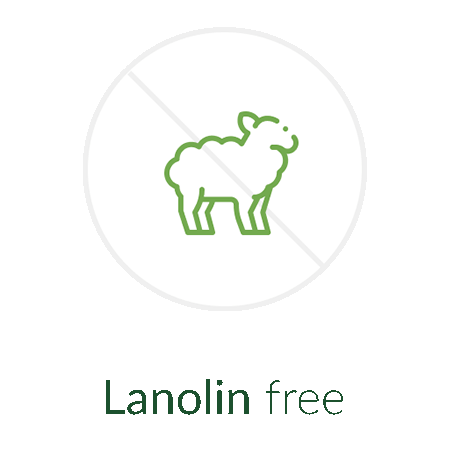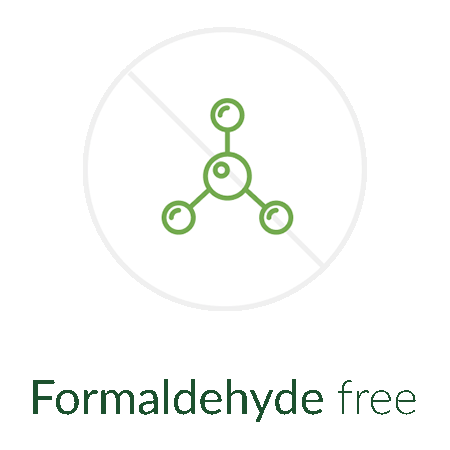We all use a sunscreen when we go on holiday, or take a day trip to the beach, but how many of us actually use it when popping out to the shops, doing a spot of gardening, or just going for a walk? And more importantly, how many of us actually think to wear a sunscreen indoors?
The Sun gives us a sense of well-being and relaxation, but unfortunately UV exposure is the biggest contributory factor to premature ageing. Being in the business of skin care we are constantly dealing with the effects of UV exposure hence ageing is our biggest battle.
A “Tan” was for so long held as the pinnacle of what was thought to be healthy and attractive. Being tanned is not a sign of health, the simple fact that your skin has changed colour is a sign of damage, the body’s natural defensive mechanism from over exposure to UV Rays. Educating our customers about the damaging effects of UV is important to us and therefore highlighting the importance of sun care and sun protecting agents in every day product use.
We are not able to determine how often a person chooses to be exposed to the sun, but what we can do is build your knowledge on protecting yourself in the sun. Selecting the correct sun protection and products can help to diffuse pigmentation and the signs of ageing.
Even though the sun does have benefits, it DOES cause skin damage and skin cancer. There is no such thing as a safe “sun tanning”. Excess sun causes the skin to become thick and leathery; it also weakens the skin’s elasticity by cross-linking the collagen fibres in the dermis, which results in sagging and wrinkling. The sun is also responsible for pigmentation in the skin, therefore people who suffer from pigmentation problems need to eliminate the cause, i.e. UV exposure.
Most worryingly, the last thirty years have seen a dramatic rise in the number of cases of skin cancer. Figures gathered by the World Health Organization (WHO) showed that in 2018, there were 17,852 cases of melanoma skin cancer diagnosed in the UK. This translated to 2,764 deaths from melanoma skin cancer. WHO predicts that by 2025, the number of cases of melanoma skin cancer will rise by 9% to 19,513 with deaths increasing by 13% to 3,119. By 2040, nearly 22,886 people will be diagnosed with melanoma skin cancer, a 28% increase on 2018 figures, while 3,968 will die from the disease, a staggering 44% increase.

The two main causes of skin cancer are the sun’s harmful ultraviolet (UV) rays and the use of UV tanning beds. Most cases of skin cancer are now completely curable. Nine out of ten cases are NON-MELANOMA of which there are two types; basal cell carcinoma and squamous cell carcinoma. These are rarely fatal if treated early, and they tend to appear on the more exposed parts of the body in later life. It is thought that they arise as a result of cumulative exposure to the sun and are therefore more common in older people and those who have spent much of their time outdoors. One in ten cases however suffer from the more dangerous MALIGNANT MELANOMAS. These spread rapidly and can kill if not treated quickly. They can often be linked to sunburn or occasional over-exposure and are more common in younger people. For this reason, children and infants who tend to spend more time outdoors, need special care.
WHAT IS THE DIFFERENCE BETWEEN UVA, UVB AND UVC?
UVAgeing rays are responsible for the formation of free radicals and photo-allergic reactions.
The danger from UVA rays has been given further backing by Australian research that was published in March 2004. In this study, Australian researchers found that UVA rays caused DNA damage to the cells deep within the skin. It is this layer of cells that regenerates our skin and it is feared that damage to the DNA of these cells may increase a person's risk of developing skin cancer.
Exposure to UVA causes skin ageing and there is a high level of concern that UVA increases the risk of malignant melanoma, the most dangerous form of skin cancer. In contrast to UVB, UVA does not cause sunburn.
UVBurning rays penetrate deep into the skin cells of the epidermis and are the main cause of sunburn and the development of skin cancer.
Exposure to UVB increases the risk of basal cell carcinoma and squamous cell carcinoma, two forms of non-melanoma skin cancer. It is also responsible for sunburn.
UVCancer rays are completely absorbed by the stratosphere and atmosphere and never reach the earth’s surface. With the damage to our ozone layer however, this barrier may break down allowing this cancer causing UVC ray to reach the earth’s surface.
Safe sun practices are not only for summertime. Protecting your skin from the sun’s harmful rays year-round could actually save your life! Did you know…?
- UV is the biggest contributing factor to premature ageing.
- Skin cancer cases have doubled over the past 20 years.
- The incidence of melanoma, the deadliest form of skin cancer, is rising faster than that of any other cancer.
- Almost 18,000 new cases per year in the UK alone are diagnosed with skin cancer.
- Over 2,500 people die from skin cancer each year.
- Skin cancer can affect all ages.
- Unlike many types of cancer, a large number of cases also occur in young adults.
- Doctors believe as much as 4 out of 5 cases of skin cancer could have been prevented had they reduced their exposure to the sun.
- Regular daily use of a Sunscreen with an SPF15 or higher reduces your risk of melanoma by 50%.
- Your risk of melanoma doubles if you've had 5 or more sunburns.
- Never burn! Sunburn causes permanent damage. The initial burning will heal but the effects can reappear later in life and present themselves as skin cancer.
- One blistering sunburn in childhood more than doubles a person’s chances of developing melanoma later in life.
- If you have a tan, you have already damaged your skin; it does not give more protection.
- Malignant melanomas (skin cancer) are caused by short, sharp and excessive exposure that causes sunburn including sunbeds.
- In the UK, most of us are not exposed to the sun for the whole year. But over the past couple of decades, more and more of us have been going abroad for two or three weeks a year for a holiday and to get a good tan. This is more of a risk for melanoma than being in the sun for part of the day, throughout the year.
- Remember, you can still burn even on a cloudy day!
- Intense sun exposure is between the hours of 11.00am and 3.00pm
- Sunlight coming through a window can damage your skin.
- Blue Light exposure, produced by the everyday use of electronic devices, is now known to have a harmful impact on skin.
Blue light is part of the sunlight spectrum also known as high energy visible (HEV) light. Due to the high energy property of this light range, it can enter the skin deeply and reach the dermis where some of the most important components are located, such as: collagen, elastin, hyaluronic acid and others. This action leads to premature ageing and the signs and symptoms associated with it including the early onset of lines and wrinkles, elastosis, melasma and hyperpigmentation and possibly skin cancer. Presently, this type of light is ubiquitous and produced by the everyday use of electronic devices like computer monitors, some modern television sets and smartphones. In the past, no clinical trials have verified in detail the harmful impact on skin caused by everyday blue light exposure. Now more than ever we need to accept that a sunscreen is to be worn every day, not just when exposed to the sun.
There are several immediate effects of the sun and these include:
- Erythema
- Thickening of the skin
- Tanning (increase of melanin pigment)
- Photo Sensitivity
- Wrinkles
- Vasodilation
Although it is impossible to completely eliminate the possibility of skin cancer, the risk of developing such a cancer can be reduced significantly with the following steps:
- Reducing exposure to ultraviolet (UV) radiation, especially in early years. Take special care of children and babies. Sunburn during childhood can lead to skin cancer in later life.
- Children spend time outdoors, and they may not be aware of the strength of the sun.
- On the flip side, children, young people and adults spend considerable time on their electronic devices, especially now so many of us are working from home. This highlights the importance of wearing a sunscreen indoors, whatever the weather is doing outside.
- Take care not to burn. Sunburn is painful and unsightly, and the damage may be permanent with serious long-term effects.
- Avoiding sun exposure during the day, especially from 10.00am to 4.00pm, when the sun is highest in the sky, this is when the sun is most intense. Don't be fooled by a cool breeze, or light cloud - on an overcast day there can still be 80% of the ultraviolet radiation present.
- Cover up, wearing protective clothing (long sleeves and hats) when outdoors. The best way to protect your skin is to put a physical barrier between yourself and the sun. Clothes are the simplest form of defence. Choose a tightly woven cloth to block the rays and a loose fit to keep you cool. A wide brimmed hat is essential to cover the nose, ears and neck - the most common sites for skin cancer. Eyes need protection too, especially from the reflected glare from water or snow.
- Hydrate your skin by drinking water and moisturising topically with appropriate sunscreen products before going outdoors.
- Apply sunscreen at least 30 minutes before going out in the sun.
- Use a broad-spectrum sunscreen that blocks both UVA and UVB radiation as well as Blue Light. Use a high factor sunscreen, SPF40 is the maximum natural protection you can receive from a product without having to add chemicals. Make sure it is broad spectrum to protect you from UVA and UVB. Apply it generously every morning, and if going out in the sun, re-apply regularly.
- Reapply sun block every 2 hours and after swimming /perspiring.
- Remember, you are not only at risk on holiday abroad.
Whatever your outdoor activity, be it sport, gardening or simply walking to work or the shops, be aware of the sun, and protect yourself.
Much has been said about the consequences of long-term unprotected sun exposure, but it’s not always heeded especially in the UK, we seem to think that because our summers are so un-predictable that we are the exception. You are at risk of sun damage if you are outdoors or indoors in any season and whether the sky is sunny or overcast – particularly between 10.00am and 4.00pm. As professional skin care experts we recommend you use sunscreen every single day of the year, inside and outdoors.
Protection….
- Applying a high-quality sunscreen should mean that no side-effects or breakouts should occur. At Pevonia we suggest avoiding products containing chemical ingredients such as PABA (Para Amino Benzoic Acid) which is widely used in sunscreen creams as it has anaesthetic properties, but has been linked to allergic eczema in sensitive skin and prickly heat.
- We suggest using an SPF40 hydrating sunscreen on a daily basis to ensure regular protection.
- A well-studied, non-comedogenic formula delivers excellent performance. Do use skincare products carefully so you do not contaminate them. Discard sunscreen products when they have reached their expiration dates, as they lose their effectiveness.
- To avoid dryness/dehydration of the skin, or peeling from exposure to the sun, remember to keep your skin hydrated and lubricated by adhering to a regular maintenance regime before and after sun exposure. By following a solid skincare routine on a daily basis and using high-quality products, these problems can be avoided.
- Also, if exfoliants are part of your skincare regime, be aware that products which exfoliate the skin before sun exposure can cause irritation, sunburn, inflammation, and possible skin pigmentation when exposed to the sun. Some products that are needed for a continuous routine of care, i.e. acne, may contain exfoliants that are better applied during the evening hours or temporarily suspended to avoid sensitising the skin.
Sunburned Skin…
What if the worst happens and you have over-exposed yourself to the sun? Soothing and repairing professional and home care therapies are recommended. Applying ice-cold packs directly to the skin, talcum powder, or over-the-counter menthol and alcohol-based products are not recommended. These options may provide initial relief but can cause more discomfort afterwards, and also dehydrate the skin with the consequence of delaying natural healing.
We advise you drink plenty of water and avoid alcoholic beverages, too much coffee and smoking. Professionally, it is advised to calm or soothe the skin through the use of appropriately known and proven ingredients that include, but are not limited to Green Tea, Chamomile, Sorbitol, regenerating amino acids, and Water Lily (Nymphea Alba) extract for their cooling, anti-elastase (safeguarding against the decrease in skin’s elasticity), anti-inflammatory and hydrating benefits.
Home care should include ingredients similar to those listed above for the first 2-3 days and then followed with a vitamin-rich moisturiser to restore the natural wellbeing of the skin. To provide rapid relief from sunburn, a cooling mist containing calming and healing ingredients, could be applied to the skin as often as necessary. It is recommended that sunburned skin should not be exposed to the sun for at least 2 months and definitely not without sunscreen protection.
Practice Safe Sun with Pevonia’s Ligne Soliel Homecare:

HYDRATING SUNSCREEN BROAD SPECTRUM SPF40
This easy-to-apply, broad spectrum, mineral Sunscreen is ideal for all skin types, delivering superior protection for the entire family. Containing Pevonia-exclusive SunShield Blend, its four-fold protective action specifically and effectively safeguards your skin from 1) sunburn, 2) accelerated ageing, 3) hyperpigmentation, and 4) dehydration, caused by continuous exposure to UV, Infrared and Blue Light Rays. Now you can enjoy both the indoors and outdoors, while avoiding harmful rays.
Pevonia’s Hydrating Sunscreen SPF40 also delivers Blue Light Protection from electronics as well as defence against environmental stressors, such as pollution and smoke. Additionally, it absorbs quickly and easily without any of the streaks or chalky residue associated with typical mineral sunscreens, so it can be applied as the last step of your morning skincare routine and used as a primer before makeup, if you wear it.
With new ingredients sustainably sourced and free from harmful chemicals, Pevonia has proudly formulated this product to be Ocean-Friendly and Reef-Safe.
After any sun exposure the skin needs to be encouraged to cool. This is achieved with the use of Pevonia’s Spritz; a hydrating mist to refresh, cool, heal and nourish the skin. A pleasant blend of healing Aloe, restoring Chamomile, anti-irritant Calendula and soothing French Rose work together to balance and replenish your skin’s natural moisture. This can work well as a face and body spritz whilst travelling, or in drying environments to maintain moisture levels.
Using after-sun really is an essential part of an effective sun care routine and acts as a safety net if your application is less than perfect, which in all fairness, time is sometimes an issue and when applying quickly, areas can be missed. Firstly, it strengthens skin as it delivers much-needed anti-oxidants which will fight the free radicals which will appear after UV exposure. Secondly, it replaces lost moisture from the skin’s surface, hydrating and feeding it, and can also aid cell regeneration. This will then encourage epidermal cell turnover to speed up and return to normal. Finally, it will nourish the skin with all the nutrients lost when being exposed to the sun’s rays, plus it will help it to recover much quicker from the effects of UV rays. Infused with Water Lily and Proline, Pevonia's After-Sun Soothing Gel will soothe and desensitise your sun-sensitive skin.
This high-performance anti-ageing moisturiser provides smooth coverage for a flawless look whilst simultaneously offering Broad Spectrum SPF30 to protect your skin from UVA and UVB rays. Its unique formulation delivers brightening in five seconds for a truly luminous effect. The make-up colour is based on natural mineral iron oxide and has the benefits of mineral make-up, lasting all day. The most effective natural anti-inflammatory actives extracted from Caribbean Sea Whip, and natural deeply nourishing and hydrating emulsifiers from Green Olives blend with Marine Collagen, Vitamin C, Shea Butter and Titanium Dioxide to offer multi-action 5-in-1 perfection:
- Age-defying
- Ultra-hydrating
- Broad spectrum protection
- Healthy luminosity
- Tinted for flawless look
Think ahead – prevent and protect.








